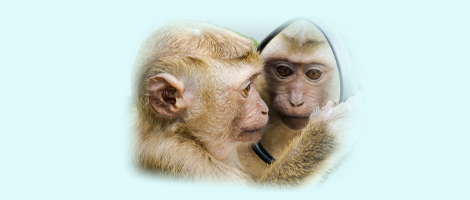













• •
刘子琪1( ), 李云英1(
), 李云英1( )(
)( ), 李钦1,2, 李元涵1, 何芳雁1,2(
), 李钦1,2, 李元涵1, 何芳雁1,2( )(
)( ), 温伟波1,2(
), 温伟波1,2( )
)
收稿日期:2025-01-24
修回日期:2025-06-10
出版日期:2025-08-15
通讯作者:
何芳雁(1989—),女,硕士,高级实验师,研究方向:中药药理与应用。E-mall: hefangyan@foxmail.com。ORCID: 0009-0009-8945-8002;作者简介:刘子琪(2000—),女,硕士研究生,研究方向:中药药理与应用。E-mall: 1947316311@qq.com。ORCID:0009-0003-1432-1657;基金资助:
LIU Ziqi1( ), LI Yunying1(
), LI Yunying1( )(
)( ), LI Qin1,2, LI Yuanhan1, HE Fangyan1,2(
), LI Qin1,2, LI Yuanhan1, HE Fangyan1,2( )(
)( ), WEN Weibo1,2(
), WEN Weibo1,2( )
)
Received:2025-01-24
Revised:2025-06-10
Published:2025-08-15
Contact:
HE Fangyan (ORCID: 0009-0009-8945-8002), E-mall: hefangyan@foxmail.com;摘要:
胃溃疡(gastric ulcer,GU)是消化系统的常见病、多发病和顽固性疾病之一。脾胃虚寒是GU最常见且难以治愈的一种证型,是医学研究领域的重点和难点。因此,构建科学合理且符合临床实际的脾胃虚寒型GU动物模型并制定客观有效的评价标准,对于深入研究GU的发病机制和治疗方法具有重要意义。本文通过系统梳理相关文献,对脾胃虚寒型GU动物模型的制备方法进行了全面介绍:首先介绍西医GU病理模型的构建方法,如幽门结扎法、水浸-束缚应激法、乙醇诱导法、乙酸诱导法等;阐述中医脾胃虚寒证候模型的建立方法,包括饮食失节法、苦寒泻下法、过度劳倦法、耗气破气法和过食酸味法等;重点讲述脾胃虚寒型GU病证结合模型的构建方法,包括双因素造模法和三因素造模法。同时,从多个角度总结了脾胃虚寒型GU动物模型的评价指标,包括动物体征表征(外观症状、动物行为和代谢指标)、组织形态与分子生物学指标(胃功能、氧化应激、炎症因子、其他细胞因子、凝血4项、肠道菌群检测),力求构建一个综合性的评价体系。本文进一步从方药反证的角度,通过分析方剂的药物组成和药理作用效果,推断其治疗的疾病动物模型所属的证型,从而验证动物模型是否构建成功。通过本文综述,以期为构建与临床实际高度契合、体现中医药特色的GU中医证候动物模型提供有力参考,从而推动GU中医证候研究和中医药治疗GU方法的深入探索,促进中医药在GU治疗中的应用和发展。
中图分类号:
刘子琪,李云英,李钦,等.脾胃虚寒型胃溃疡动物模型研究进展[J]. 实验动物与比较医学.. DOI: 10.12300/j.issn.1674-5817.2025.015.
LIU Ziqi,LI Yunying,LI Qin,et al. Research Progress on Animal Models of Gastric Ulcer of Spleen-Stomach Deficiency Cold Type[J]. Laboratory Animal and Comparative Medicine. DOI: 10.12300/j.issn.1674-5817.2025.015.
| [1] | GONG H Y, ZHAO N, ZHU C L, et al. Treatment of gastric ulcer, traditional Chinese medicine may be a better choice[J]. J Ethnopharmacol. 2024, 324:117793. DOI:10.1016/j.jep.2024.117793 . |
| [2] | LI Z S, ZOU D W, MA X Q, et al. Epidemiology of peptic ulcer disease: endoscopic results of the systematic investigation of gastrointestinal disease in China[J]. Am J Gastroenterol, 2010, 105(12):2570-2577. DOI:10.1038/ajg.2010.324 . |
| [3] | 薛彩霞, 张雁霞. 714例上消化道出血的临床特点、病因及危险因素分析[J]. 山西大同大学学报(自然科学版), 2022, 38(3):73-75, 85. DOI:10.3969/j.issn.1674-0874.2022.03.016 . |
| XUE C X, ZHANG Y X. Clinical characteristics, pathogeny and risk factors of 714 cases of upper gastrointestinal bleeding[J]. J Shanxi Datong Univ Nat Sci Ed, 2022, 38(3):73-75, 85. DOI:10.3969/j.issn.1674-0874.2022.03.016 . | |
| [4] | JIN Y, ZHANG M, WANG Y F, et al. Protective effect and potential mechanism of the traditional Chinese medicine Shaoyao-Gancao decoction on ethanol-induced gastric ulcers in rats[J]. Evid Based Complement Alternat Med, 2022, 2022:3069089. DOI:10.1155/2022/3069089 . |
| [5] | WU T T, ZHANG H, JIN Y, et al. The active components and potential mechanisms of Wuji Wan in the treatment of ethanol-induced gastric ulcer: an integrated metabolomics, network pharmacology and experimental validation[J]. J Ethnopharmacol, 2024, 23;326:117901. DOI:10.1016/j.jep.2024.117901 . |
| [6] | 高月, 李佳. 黄芪建中汤对老年脾胃虚寒型胃溃疡患者的临床疗效及血清EGF、TIMP-1及PGE2的影响[J]. 中医药学报, 2025, 53(1):93-97. DOI: 10.19664/j.cnki.1002-2392.250017 . |
| GAO Y, LI J. Clinical efficacy of Huangqi Jianzhong decoction on elderly patients with spleen and stomach deficiency-cold type gastric ulcer and its effects on serum EGF, TIMP-1, and PGE2 levels[J]. Acta Chin Med Pharmacol, 2025, 53(1):93-97. DOI: 10.19664/j.cnki.1002-2392.250017 . | |
| [7] | 胡羽, 肖景东. 中医中药治疗胃溃疡的研究进展[J]. 中医临床研究, 2017, 9(29):142-145. DOI: 10.3969/j.issn.1674-7860.2017.29.071 . |
| HU Y, XIAO J D. A review on treating gastric ulcer in TCM[J]. Clin J Chin Med, 2017, 9(29):142-145. DOI: 10.3969/j.issn.1674-7860.2017.29.071 . | |
| [8] | 扈丽萍. 李慧臻主任中医治疗胃溃疡经验初探[J]. 光明中医, 2021, 36(14):2313-2315. DOI: 10.3969/j.issn.1003-8914.2021.14.015 . |
| HU L P. Discussion on the experience of director Li Huizhen in treating gastric ulcer with traditional Chinese medicine[J]. Guangming J Chin Med, 2021, 36(14):2313-2315. DOI: 10.3969/j.issn.1003-8914.2021.14.015 . | |
| [9] | 黄志强, 温孝荣. 黄芪建中汤联合督灸对脾胃虚寒型胃溃疡的影响[J]. 光明中医, 2024, 39(23):4772-4774. DOI: 10.3969/j.issn.1003-8914.2024.23.032 . |
| HUANG Z Q, WEN X R. Effect of Huangqi Jianzhong decoction combined with governor vessel moxibustion on gastric ulcer of spleen and stomach deficiency-cold type[J]. Guangming J Chin Med, 2024, 39(23):4772-4774. DOI: 10.3969/j.issn.1003-8914.2024.23.032 . | |
| [10] | 宋厚盼, 曾梅艳, 陈小娟, 等. 脾胃虚寒型胃溃疡病证结合大鼠实验模型的建立及评价研究[J]. 中国中医基础医学杂志, 2020, 26(4):468-473. DOI: CNKI:SUN:ZYJC.0.2020-04-019 . |
| SONG H P, ZENG M Y, CHEN X J, et al. Establishment and evaluation of the combination of disease and syndrome experimental model of spleen stomach deficiency cold type of gastric ulcer in rats[J]. Chin J Basic Med Tradit Chin Med, 2020, 26(4):468-473. DOI: CNKI:SUN:ZYJC.0.2020-04-019 . | |
| [11] | 胥文娟, 汪龙德, 牛媛媛, 等. 消化系统病证结合动物模型的研究进展及中医药靶点干预[J]. 中国实验方剂学杂志, 2022, 28(19):258-266. DOI: 10.13422/j.cnki.syfjx.20221845 . |
| XU W J, WANG L D, NIU Y Y, et al. Research progress of digestive system disease and syndrome combined animal model andTraditional Chinese medicine target intervention: a review[J]. Chin J Exp Tradit Med Formulae, 2022, 28(19):258-266. DOI: 10.13422/j.cnki.syfjx.20221845 . | |
| [12] | 刘霞, 李静, 戴纯辉, 等. 牛乳铁蛋白对实验性胃黏膜损伤及胃溃疡大鼠模型的影响[J]. 中国现代应用药学, 2022, 39(6):757-763. DOI: 10.13748/j.cnki.issn1007-7693.2022.06.007 . |
| LIU X, LI J, DAI C H, et al. Influence of bovine lactoferrin effects on experimental gastric mucosal injury and gastric ulcer rat model[J]. Chin J Mod Appl Pharm, 2022, 39(6):757-763. DOI: 10.13748/j.cnki.issn1007-7693.2022.06.007 . | |
| [13] | ABDEL-HAMED A R, ABO-ELMATTY D M, ESSAWY S S, et al. Antisecretory and antioxidative effects of the antidepressants fluvoxamine and mirtazapine on water immersion stress and pyloric ligation-induced gastric ulcer in rats[J]. Int J Health Sci, 2022, 16(3):25-34. |
| [14] | AL-GABRI N, ELNAGAR G M, SAGHIR S A M, et al. Preliminary study of gastroprotective effect of Aloe perryi and date palm extracts on pyloric ligation-induced gastric ulcer in experimental rats[J]. Biomed Res Int, 2022, 2022(1):9246785. DOI:10.1155/2022/9246785 . |
| [15] | ZHANG D J, XIANG M, JIANG Y, et al. The protective effect of polysaccharide SAFP from Sarcodon aspratus on water immersion and restraint stress-induced gastric ulcer and modulatory effects on gut microbiota dysbiosis[J]. Foods, 2022, 11(11):1567. DOI:10.3390/foods11111567 . |
| [16] | FIGUEIREDO F F, DAMAZO A S, ARUNACHALAM K, et al. Evaluation of the gastroprotective and ulcer healing properties by Fridericia chica (Bonpl.) L.G. Lohmann hydroethanolic extract of leaves. J Ethnopharmacol. 2023 Jun 12;309:116338. DOI: 10.1016/j.jep.2023.116338 . |
| [17] | AKMAL M N, ABDEL AZIZ I, AZLINA M F NUR. Piper sarmentosum Roxb. methanolic extract prevents stress-induced gastric ulcer by modulating oxidative stress and inflammation[J]. Front Pharmacol, 2023, 13:971443. DOI:10.3389/fphar.2022.971443 . |
| [18] | EDITORS P O. Retraction: antioxidant properties and gastroprotective effects of 2-(ethylthio)benzohydrazones on ethanol-induced acute gastric mucosal lesions in rats[J]. PLoS One, 2023, 18(11): e0294011. DOI:10.1371/journal.pone.0294011 . |
| [19] | IBRAHIM M Y, HASHIM N M, DHIYAALDEEN S M, et al. Retraction note: acute toxicity and gastroprotection studies of a new schiff base derived manganese (II) complex against HCl/ethanol-induced gastric ulcerations in rats[J]. Sci Rep, 2020, 10(1):6792. DOI:10.1038/s41598-020-63217-y . |
| [20] | HAN Y M, SONG M Y, LEE D Y, et al. Gastric mucosal protective effects of Cinnamomum cassia in a rat model of ethanol-induced gastric injury[J]. Nutrients, 2023, 16(1):55. DOI:10.3390/nu16010055 . |
| [21] | 姚晓艳, 刘文, 宋信莉, 等. 左金对乙醇诱导致大鼠胃溃疡的治疗作用及机制研究[J]. 中华中医药学刊, 2019, 37(10):2404-2407, 2565. DOI: 10.13193/j.issn.1673-7717.2019.10.023 . |
| YAO X Y, LIU W, SONG X L, et al. Effect and mechanism of Zuojin pills on gastric ulcer induced by ethanol in rats[J]. Chin Arch Tradit Chin Med, 2019, 37(10):2404-2407, 2565. DOI: 10.13193/j.issn.1673-7717.2019.10.023 . | |
| [22] | LIU H F, CHEN Y Q, HU Y L, et al. Protective effects of an alcoholic extract of Kaempferia Galanga L. rhizome on ethanol-induced gastric ulcer in mice[J]. J Ethnopharmacol, 2024, 325:117845. DOI:10.1016/j.jep.2024.117845 . |
| [23] | 樊继法, 曾海松, 刘吉华. 荜铃胃痛颗粒抗实验性胃溃疡作用研究[J]. 药物评价研究, 2022, 45(2):259-265. DOI: 10.7501/j.issn.1674-6376.2022.02.008 . |
| FAN J F, ZENG H S, LIU J H. Effect of Biling Weitong Granules in treating experimental gastric ulcer[J]. Drug Eval Res, 2022, 45(2):259-265. DOI: 10.7501/j.issn.1674-6376.2022.02.008 . | |
| [24] | IPEK E, EKREN AŞıCı G S, EPIKMEN E T, et al. Evaluation of acetic acid-induced chronic gastric ulcer healing by propionyl-L-carnitine administration[J]. Chem Biodivers, 2023, 20(7): e202300210. DOI:10.1002/cbdv.202300210 . |
| [25] | 王建兵, 刘二军, 张伟玲, 等. 电针联合健中愈疡片对实验性胃溃疡模型大鼠β-内啡肽及炎症因子的影响[J]. 东南大学学报(医学版), 2018, 37(5):925-929. DOI: 10.3969/j.issn.1671-6264.2018.05.037 . |
| WANG J B, LIU E J, ZHANG W L, et al. Effects of electroacupuncture plus Jianzhongyuyang Pill on β-endorphin and inflammatory factor in experimental gastric ulcer model rats[J]. J Southeast Univ Med Sci Ed, 2018, 37(5):925-929. DOI: 10.3969/j.issn.1671-6264.2018.05.037 . | |
| [26] | 马平平, 毕珺辉, 徐丹, 等. 良附丸对4种实验性胃溃疡模型大鼠的防治效果[J]. 中医药信息, 2018, 35(5):9-12. DOI: 10.19656/j.cnki.1002-2406.180053 . |
| MA P P, BI J H, XU D, et al. Therapeutic and preventive effects of Liangfu Wan on four experimental gastric ulcer models in rats[J]. Inf Tradit Chin Med, 2018, 35(5):9-12. DOI: 10.19656/j.cnki.1002-2406.180053 . | |
| [27] | 范东东, 郑丰杰. 从«伤寒论·平脉法»第32条谈中焦寒邪的上逆与下溜[J]. 北京中医药大学学报, 2018,41(1): 5-8.DOI:10.3969/j.issn.1006-2157.2018.01.001 . |
| FAN D D, ZHENG F J. On ascending counterflow and descending slide of middle energizer cold base on item 32 in Shanghan Lun·Pingmai Fa[J]. J Beijing Univ Tradit Chin Med, 2018,41 (1): 5-8. DOI:10.3969/j.issn.1006-2157.2018.01.001 . | |
| [28] | 仇婧玥, 喻昶, 熊萌, 等. 理中汤干预MAPK通路治疗脾胃虚寒型胃溃疡大鼠的机制研究[J]. 中药药理与临床, 2025, 41(4):2-9. DOI: 10.13412/j.cnki.zyyl.20241012.002 . |
| QIU J Y, YU C, XIONG M, et al. Pharmacodynamic mechanism of Lizhong(理中)decoction in treatment of gastric ulcer due to piweixuhan(脾胃虚寒)in rats via MAPK signaling pathway[J]. Pharmacol Clin Chin Mater Med, 2025, 41(4):2-9. DOI: 10.13412/j.cnki.zyyl.20241012.002 . | |
| [29] | 白敏, 段永强, 杨晓轶, 等. 黄芪建中汤对脾胃虚寒型胃溃疡大鼠作用机制研究[J]. 中国临床药理学杂志, 2021, 37(4):397-400. DOI: 10.13699/j.cnki.1001-6821.2021.04.012 . |
| BAI M, DUAN Y Q, YANG X Y, et al. Effect and mechanism of Huangqi Jianzhong Decoction on gastric ulcer of spleen stomach deficiency cold type in rats[J]. Chin J Clin Pharmacol, 2021, 37(4):397-400. DOI: 10.13699/j.cnki.1001-6821.2021.04.012 . | |
| [30] | 张瑞欣, 杨志军, 黄蓉, 等. 不同配比生姜-黄芩药对对胃寒证模型大鼠能量代谢酶、胃肠动力及脑肠肽的影响[J]. 中医杂志, 2022, 63(22):2162-2169. DOI: 10.13288/j.11-2166/r.2022.22.013 . |
| ZHANG R X, YANG Z J, HUANG R, et al. Effects of Shengjiang(rhizoma zingiberis recens)-Huangqin(Radix scutellariae) herbal pair at different composition ratios on energy metabolism enzymes, gastrointestinal motility and brain-gut peptides in rats with stomach cold syndrome[J]. J Tradit Chin Med, 2022, 63(22):2162-2169. DOI: 10.13288/j.11-2166/r.2022.22.013 . | |
| [31] | 吴春艳, 邢陈. 康复新液联合黄芪建中汤治疗胃溃疡对炎性因子、氧化应激的影响[J]. 中医药临床杂志, 2022, 34(12):2363-2366. DOI: 10.16448/j.cjtcm.2022.1237 . |
| WU C Y, XING C. Observation on therapeutic effect of kangfuxin liquid combined with Huangqi Jianzhong decoction on gastric ulcer and its influence on inflammatory factors and oxidative stress[J]. Clin J Tradit Chin Med, 2022, 34(12):2363-2366. DOI: 10.16448/j.cjtcm.2022.1237 . | |
| [32] | 李希新. 对苦寒药伤胃的理论探讨[J]. 中国中药杂志, 2001, 26(11): 792-794. DOI: 10.3321/j.issn:1001-5302.2001.11.028 . |
| LI X X. A theoretical exploration on stomach impairment by bitter-cold herbs[J]. China J Chin Mater Med, 2001, 26(11): 792-794. DOI: 10.3321/j.issn:1001-5302.2001.11.028 . | |
| [33] | 谢建群, 陆雄, 马军, 等. 健脾温中法对脾胃虚寒型肠易激综合征模型大鼠生长抑素影响的实验研究[J]. 江西中医学院学报, 2003, 15(4):56-58. DOI: 10.3969/j.issn.1005-9431.2003.04.022 . |
| XIE J Q, LU X, MA J, et al. Experimental Study on the Influence upon Somatostatin in Rats of Irritable Bo wel Syndrome of insufficiency of the spleen-Yang by Invigorating Spleen and Warming Mid-energizer[J]. J Jiangxi Coll Tradit Chin Med, 2003, 15(4):56-58. DOI: 10.3969/j.issn.1005-9431.2003.04.022 . | |
| [34] | 陈小娟, 曾梅艳, 宋厚盼, 等. 黄芪建中汤对脾胃虚寒证胃溃疡大鼠的影响[J]. 中成药, 2020, 42(4):867-874. DOI: 10.3969/j.issn.1001-1528.2020.04.009 . |
| CHEN X J, ZENG M Y, SONG H P, et al. Effects of Huangqi Jianzhong Decoction on rats with gastric ulcer of SpleenStomach Deficiency and Cold Pattern[J]. Chin Tradit Pat Med, 2020, 42(4):867-874. DOI: 10.3969/j.issn.1001-1528.2020.04.009 . | |
| [35] | 孙虎, 丁永伟, 王平, 等. 脾胃气虚型胃溃疡大鼠病证结合模型的制备[J]. 山东中医杂志, 2015, 34(1):47-50. DOI: 10.16295/j.cnki.0257-358x.2015.01.032 . |
| SUN H, DING Y W, WANG P, et al. Preparation of the gastric ulcer rat model with deficiency of spleen and stomach[J]. Shandong J Tradit Chin Med, 2015, 34(1):47-50. DOI: 10.16295/j.cnki.0257-358x.2015.01.032 . | |
| [36] | 韩运宗, 陈思清, 刘琴, 等. 黄芪建中汤对脾胃虚寒证胃溃疡大鼠炎症因子及HGF/c-Met信号通路的影响[J]. 中国中医急症, 2024, 33(1):22-26. DOI: 10.3969/j.issn.1004-745X.2024.01.005 . |
| HAN Y Z, CHEN S Q, LIU Q, et al. Effects of Huangqi Jianzhong decoction on inflammatory factors and HGF/c-met signaling pathway in rats with gastric ulcer of spleen-stomach deficiency and cold syndrome[J]. J Emerg Tradit Chin Med, 2024, 33(1):22-26. DOI: 10.3969/j.issn.1004-745X.2024.01.005 . | |
| [37] | 陈思清, 周赛男, 韩运宗, 等. 黄芪建中汤对胃溃疡大鼠血清炎症因子、胃黏膜表皮生长因子受体表达的影响[J]. 陕西中医, 2023, 44(8):1032-1036. DOI: 10.3969/j.issn.1000-7369.2023.08.008 . |
| CHEN S Q, ZHOU S N, HAN Y Z, et al. Effect of Huangqi Jianzhong decoction on serum inflammatory factors and expression of gastric mucosal EGFR in rats with gastric ulcer[J]. Shaanxi J Tradit Chin Med, 2023, 44(8):1032-1036. DOI: 10.3969/j.issn.1000-7369.2023.08.008 . | |
| [38] | 周赛男, 刘琴, 周姝, 等. 黄芪建中汤对脾胃虚寒证胃溃疡大鼠胃黏膜保护作用的机制研究[J]. 湖南中医药大学学报, 2023, 43(11):1978-1985. DOI: 10.3969/j.issn.1674-070X.2023.11.007 . |
| ZHOU S N, LIU Q, ZHOU S, et al. Mechanism of action of Huangqi Jianzhong Decoction in protecting gastric mucosa of gastric ulcer rats with deficiency cold of the spleen and stomach pattern[J]. J Hunan Univ Chin Med, 2023, 43(11):1978-1985. DOI: 10.3969/j.issn.1674-070X.2023.11.007 . | |
| [39] | 何杰滢, 桂蓓, 李梦秋, 等. 胃寒型功能性消化不良大鼠模型的构建[J]. 中药药理与临床, 2022, 38(2):212-217. DOI: 10.13412/j.cnki.zyyl.2022.02.028 . |
| HE J Y, GUI P, LI M Q, et al. Construction of functional dyspepsia models of Weihan (胃寒) syndrome in rats[J]. Pharmacol Clin Chin Mater Med, 2022,38(2):212-217. DOI: 10.13412/j.cnki.zyyl.2022.02.028 . | |
| [40] | 邵占梅, 仲继冬, 房玉明, 等. 格瓦斯对脾胃虚寒型胃溃疡大鼠保护作用的研究[J]. 中国酿造, 2022, 41(1):64-69. DOI: 10.11882/j.issn.0254-5071.2022.01.011 . |
| SHAO Z M, ZHONG J D, FANG Y M, et al. Protective effect of Kvass on gastric ulcer rats with spleen-stomach deficiency[J]. China Brew, 2022, 41(1):64-69. DOI: 10.11882/j.issn.0254-5071.2022.01.011 . | |
| [41] | 余凌英, 李星, 蔡平君, 等. 干姜和炮姜对脾胃虚寒型胃溃疡大鼠药效学指标及肠道菌群的影响[J]. 中国药房, 2022, 33(20):2460-2465. DOI: 10.6039/j.issn.1001-0408.2022.20.06 . |
| YU L Y, LI X, CAI P J, et al. Effects of Zingiber officinale and processed Zingiber officinale on pharmacodynamic indexes and intestinal flora on gastric ulcer rats with spleen-stomach deficiency and cold type[J]. China Pharm, 2022, 33(20):2460-2465. DOI: 10.6039/j.issn.1001-0408.2022.20.06 . | |
| [42] | 秦华珍, 李明芳, 丘海冰, 等. 红豆蔻、大高良姜乙酸乙酯部位对胃溃疡寒证大鼠胃组织GAS、MOT、EGF、VEGF、6-keto-PGF1α的影响[J]. 中华中医药杂志, 2018, 33(9):3886-3889. DOI: CNKI:SUN:BXYY.0.2018-09-043 . |
| QIN H Z, LI M F, QIU H B, et al. Effects of ethyl acetate parts of Alpinia galanga Will. and Alpinia galangal(L.) Will on GAS, MOT, EGF, VEGF and 6-keto-PGF1α contents in gastro-tissue of gastric ulcer rats with cold syndrome[J]. China J Tradit Chin Med Pharm, 2018, 33(9):3886-3889. DOI: CNKI:SUN:BXYY.0.2018-09-043 . | |
| [43] | 柳俊辉, 罗君, 谢鹏, 等. 5味山姜属中药不同部位对胃溃疡寒证大鼠环核苷酸系统的影响[J]. 时珍国医国药, 2017, 28(12):2831-2833. DOI: 10.3969/j.issn.1008-0805.2017.12.006 . |
| LIU J H, LUO J, XIE P, et al. Effects of 5 kinds of Chinese herbal medicine Alpinia in different parts of gastric ulcer of rats with cold cyclic nucleotide system[J]. Lishizhen Med Mater Med Res, 2017, 28(12):2831-2833. DOI: 10.3969/j.issn.1008-0805.2017.12.006 . | |
| [44] | 秦华珍, 牛新迈, 谢旭格, 等. 高良姜、大高良姜黄酮类成分对胃溃疡寒证大鼠胃组织PGE2、EGF和血清IL-8、TNF-α等指标的影响[J]. 时珍国医国药, 2022, 33(11):2612-2614. DOI: 10.3969/j.issn.1008-0805.2022.11.13 . |
| QIN H Z, NIU X M, XIE X G, et al. Effects of flavonoids from Alpinia officinarum and Alpinia officinarum on PGE2, EGF, and serum IL-8, TNF-α levels in rats with gastric ulcer cold syndrome[J]. Lishizhen Med Mater Med Res, 2022, 33(11):2612-2614. DOI: 10.3969/j.issn.1008-0805.2022.11.13 . | |
| [45] | 魏广义, 刘楠楠, 王淑美, 等. 抗胃溃疡中药实验研究进展[J]. 中药药理与临床, 2020, 36(5):228-232. DOI: 10.13412/j.cnki.zyyl.2020.05.029 . |
| WEI G Y, LIU N N, WANG S M, et al. Experimental progress on traditional Chinese medicines against gastric ulcer[J]. Pharmacol Clin Chin Mater Med, 2020, 36(5):228-232. DOI: 10.13412/j.cnki.zyyl.2020.05.029 . | |
| [46] | 马玉朋, 袁亚茹, 邸志权, 等. 功能性消化不良动物模型的中医证型及其评价指标研究进展[J]. 药物评价研究, 2024, 47(4):889-896. DOI:10.7501/j.issn.1674-6376.2024.04.022 . |
| MA Y P, YUAN Y R, DI Z Q, et al. Research progress on animal models of functional dyspepsia in traditional Chinese medicine syndromes and evaluation indicators[J]. Drug Eval Res, 2024, 47(4):889-896. DOI:10.7501/j.issn.1674-6376.2024.04.022 . | |
| [47] | 吉琳, 申琪, 郭向东. 阳虚动物模型及检测指标的研究进展[J]. 中国比较医学杂志, 2021, 31(1):138-145. DOI: 10.3969/j.issn.1671-7856.2021.01.021 . |
| JI L, SHEN Q, GUO X D. Research progress in developing an animal model and detection index for Yang deficiency[J]. Chin J Comp Med, 2021, 31(1):138-145. DOI: 10.3969/j.issn.1671-7856.2021.01.021 . | |
| [48] | 尉光艳. 基于颜色模型下不同证型胃脘痛患者舌象客观化特征研究[D]. 沈阳: 辽宁中医药大学, 2022. DOI: 10.27213/d.cnki.glnzc.2022.000214 . |
| WEI G Y. Study on the objective characteristics of tongue image in patients with different syndromes of epigastric pain based on color model[D]. Shenyang : Liaoning University of Traditional Chinese Medicine, 2022. DOI: 10.27213/d.cnki.glnzc.2022.000214 . | |
| [49] | 魏晴, 梁珊珊, 熊瑞, 等. 艳山姜提取物对急性胃溃疡模型小鼠的保护作用研究[J]. 中国药房, 2020, 31(18):2190-2195. DOI: 10.6039/j.issn.1001-0408.2020.18.03 . |
| WEI Q, LIANG S S, XIONG R, et al. Study on the protective effect of Alpinia zerumbet extract on acute gastric ulcer model mice[J]. China Pharm, 2020, 31(18):2190-2195. DOI: 10.6039/j.issn.1001-0408.2020.18.03 . | |
| [50] | 王璐瑶, 邓文艳, 周丹, 等. 电针合募配穴对胃溃疡模型大鼠血清生长抑素、胃泌素表达的影响[J]. 时珍国医国药, 2021, 32(10):2543-2547. DOI: 10.3969/j.issn.1008-0805.2021.10.67 . |
| WANG L Y, DENG W Y, ZHOU D, et al. Effect of electroacupuncture at He-Mu acupoint combination on serum somatostatin and gastrin expression in gastric ulcer model rats[J]. Lishizhen Med Mater Med Res, 2021, 32(10):2543-2547. DOI: 10.3969/j.issn.1008-0805.2021.10.67 . |
| [1] | 刘亚益, 贾云凤, 左一鸣, 张军平, 吕仕超. 心气阴两虚证动物模型的构建方法与评价进展[J]. 实验动物与比较医学, 2025, 45(4): 411-421. |
| [2] | 赵鑫, 王晨曦, 石文清, 娄月芬. 斑马鱼在炎症性肠病机制及药物研究中的应用进展[J]. 实验动物与比较医学, 2025, 45(4): 422-431. |
| [3] | 李会萍, 高洪彬, 温金银, 杨锦淳. 疾病动物模型数字化图谱数据库平台的构建与初步应用[J]. 实验动物与比较医学, 2025, 45(3): 300-308. |
| [4] | 潘颐聪, 蒋汶洪, 胡明, 覃晓. 慢性肾脏病大鼠主动脉钙化模型的术式优化及效果评价[J]. 实验动物与比较医学, 2025, 45(3): 279-289. |
| [5] | 王碧莹, 鲁家铄, 昝桂影, 陈若松, 柴景蕊, 刘景根, 王瑜珺. 啮齿类动物药物成瘾模型的构建方法和应用进展[J]. 实验动物与比较医学, 2025, 45(2): 158-166. |
| [6] | 陈钰涵, 陈瑾玲, 李欣, 区燕华, 王斯, 陈镜伊, 王兴易, 袁嘉丽, 段媛媛, 羊忠山, 牛海涛. 基于中西医临床病证特点的重症肌无力动物模型分析[J]. 实验动物与比较医学, 2025, 45(2): 176-186. |
| [7] | 连辉, 姜艳玲, 刘佳, 张玉立, 谢伟, 薛晓鸥, 李健. 异常子宫出血大鼠模型的构建与评价[J]. 实验动物与比较医学, 2025, 45(2): 130-146. |
| [8] | 罗世雄, 张赛, 陈慧. 常见哮喘动物模型的建立方法与评价研究进展[J]. 实验动物与比较医学, 2025, 45(2): 167-175. |
| [9] | 费彬, 郭文科, 郭建平. 疝疾病动物模型研究及新型疝修补材料应用进展[J]. 实验动物与比较医学, 2025, 45(1): 55-66. |
| [10] | 杨家豪, 丁纯蕾, 钱风华, 孙旗, 姜旭升, 陈雯, 沈梦雯. 脓毒症相关脏器损伤动物模型研究进展[J]. 实验动物与比较医学, 2024, 44(6): 636-644. |
| [11] | 孙效容, 苏丹, 贵文娟, 陈玥. 手术诱导大鼠中重度膝骨关节炎模型的建立与评价[J]. 实验动物与比较医学, 2024, 44(6): 597-604. |
| [12] | 田芳, 潘滨, 史佳怡, 徐燕意, 李卫华. 大气细颗粒物PM2.5暴露动物模型建立方法及在生殖毒性研究中的应用进展[J]. 实验动物与比较医学, 2024, 44(6): 626-635. |
| [13] | 赵小娜, 王鹏, 叶茂青, 曲新凯. 应用Triacsin C构建新型高血糖肥胖小鼠心功能减退模型[J]. 实验动物与比较医学, 2024, 44(6): 605-612. |
| [14] | 涂颖欣, 纪依澜, 王菲, 杨东明, 王冬冬, 孙芷馨, 戴悦欣, 王言吉, 阚广捍, 吴斌, 赵德明, 杨利峰. 小型猪后肢去负荷模拟失重模型的建立与组织损伤研究[J]. 实验动物与比较医学, 2024, 44(5): 475-486. |
| [15] | 黄冬妍, 吴建辉. 生殖毒理学研究动物模型的建立方法及应用评价[J]. 实验动物与比较医学, 2024, 44(5): 550-559. |
| 阅读次数 | ||||||
|
全文 |
|
|||||
|
摘要 |
|
|||||